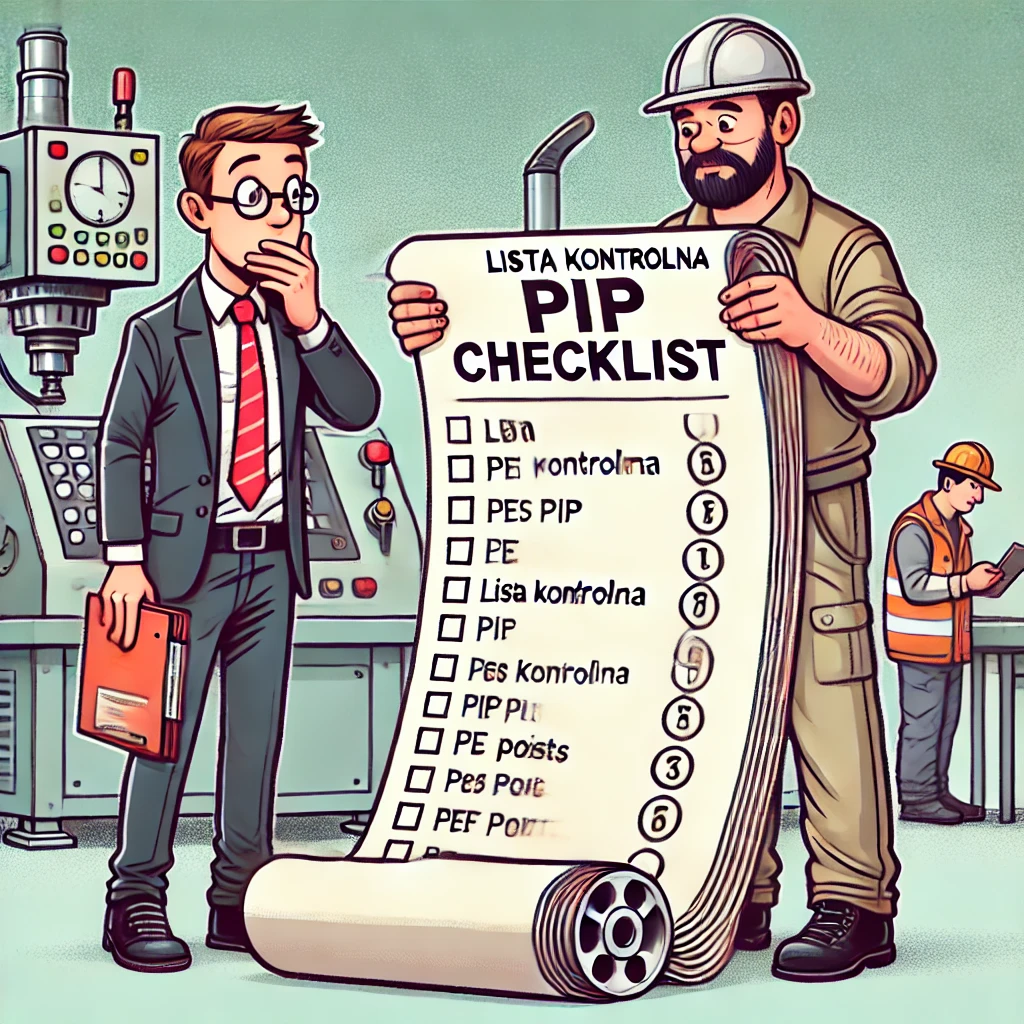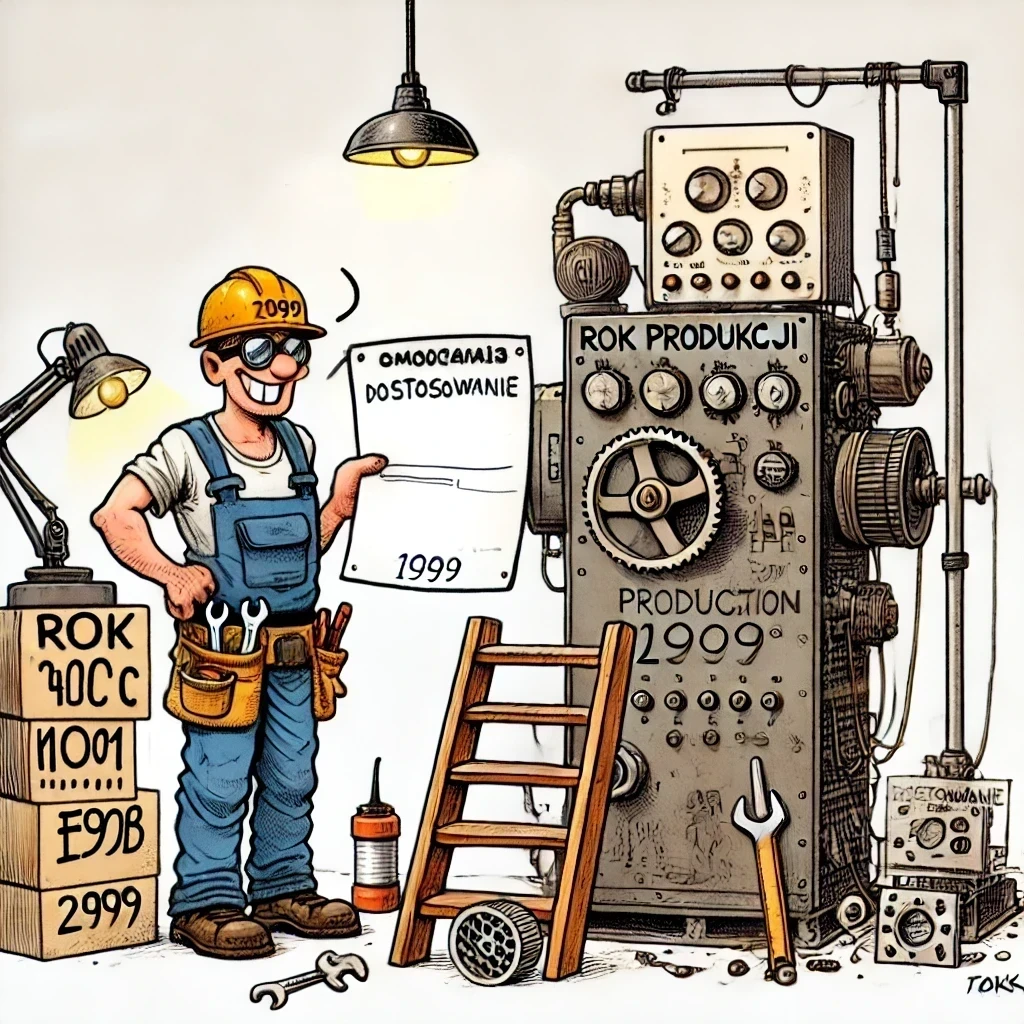Minimum Requirements for Machines are essential standards that industrial equipment must meet to ensure worker safety and health. These regulations are crucial for maintaining high safety standards in workplaces and minimizing the risk of accidents. This article delves into what these minimum requirements entail, the regulations they are based on, and how they can be practically implemented. In the era of automation, the role of industrial automation integrators becomes increasingly significant in meeting these requirements.
Table of Contents
Directive on Work Equipment and Minimum Requirements for Machines
The Directive 2009/104/EC, also known as the second specific directive, is a key document regulating the minimum requirements for machines. This directive sets safety and hygiene standards for the use of work equipment by employees during their work.
Employers must ensure that machines and equipment are suitable for their tasks and safe for users. Key requirements include:
- Ensuring proper maintenance and regular inspections of equipment.
- Providing appropriate training for employees on machine operation.
- Implementing protective measures such as guards and emergency stop systems.
Automation of production processes and advanced PLC programming can significantly aid in meeting these requirements, enhancing both safety and work efficiency.
PIP Checklist and Minimum Requirements for Machines
The State Labour Inspectorate (PIP) plays a crucial role in enforcing regulations regarding minimum requirements for machines. The PIP checklist, available to employers, is a valuable tool for identifying and meeting these requirements.
Here are 10 key points from the PIP checklist:
- Risk Assessment: Regular risk assessment related to machine use, including identifying potential hazards.
- Technical Documentation: Maintaining complete technical documentation for each machine, including user manuals and inspection records.
- Technical Inspections: Regular and periodic technical inspections of machines by authorized personnel.
- Protective Measures: Using appropriate guards, barriers, and other protective measures on machines.
- Emergency Systems: Equipping machines with emergency stop systems and other safety mechanisms.
- Employee Training: Ensuring employees are trained in safe machine operation and emergency procedures.
- Ergonomics: Considering ergonomic principles in the design and use of workstations with machines.
- Marking: Clear marking of machines, including safety instructions and warnings.
- Technical Condition Control: Regular checks of machine technical condition and rectifying detected faults.
- Personal Protective Equipment: Providing employees with appropriate personal protective equipment such as helmets, gloves, and safety glasses.

Employers can use this checklist to ensure their machines meet all current safety standards. It is often beneficial to engage with design offices or companies offering engineering outsourcing services for this purpose.
Meeting the minimum requirements for machines is crucial for ensuring worker safety and health in industry, minimizing accident risks, and regulatory compliance.
Machine Directive: Essential Minimum Requirements for Machines
The Machine Directive 2006/42/EC specifies essential requirements for machines, which are more stringent than minimum requirements for machines. These essential requirements apply to new machines introduced to the market and include:
- Safety of Design: Machines must be designed and constructed to ensure user safety.
- Stability: Machines must be stable and designed not to tip over during normal use.
- Control Systems: Machines must have reliable control systems that minimize operator error risks.
- Protection Against Mechanical Hazards: Machines must have guards and other protective measures to protect users from moving parts.
- Protection Against Electrical Hazards: Machines must be designed to eliminate electric shock risks.
- Noise Protection: Machines must be designed to minimize noise emissions.
- Vibration Protection: Machines must be designed to minimize vibration transmission to the operator.
- Protection Against Hazardous Materials: Machines must be designed to minimize contact risks with hazardous substances.
- Instructions and Marking: Machines must have detailed operating and maintenance instructions and appropriate warning markings.
- Spare Parts Availability: Manufacturers must ensure spare parts availability for a specified period after production ends.
Machines purchased after 2004 must meet these essential requirements, ensuring their safety and compliance with European standards. CE certification and marking are evidence of compliance with the Machine Directive.
Adapting older machines to current standards through safety audits, upgrades, and CE certification ensures their safe use and compliance with the Machine Directive 2006/42/EC.
Key Aspects of Implementing Minimum Requirements for Machines in Practice
In practice, implementing minimum requirements for machines involves several key aspects:
- Risk Assessment: Conducting regular risk assessments related to machine use.
- Training: Ensuring all employees are adequately trained in equipment operation.
- Maintenance: Regular inspections and maintenance of machines to ensure their functionality and safety.
- Documentation: Maintaining accurate records of inspections, repairs, and training.
These actions help minimize accident risks and ensure machines operate according to safety requirements. Implementing SCADA systems and production automation can significantly streamline these processes, making them more efficient.
Safety and Hygiene Recommendations
Safety and hygiene at work (BHP) are closely linked to minimum requirements for machines. BHP recommendations include:
- Using Appropriate Personal Protective Equipment: Such as helmets, gloves, and safety glasses.
- Adhering to Safety Procedures: Regularly checking that procedures are followed and up to date.
- Monitoring Working Conditions: Regular inspections and monitoring of working conditions to quickly identify and eliminate potential hazards.
Applying these recommendations in practice helps increase workplace safety and regulatory compliance. A safety audit conducted by specialized companies can be an invaluable tool in identifying potential hazards and implementing effective protective measures.
When to Apply Regulations on Minimum Requirements?
Regulations regarding minimum requirements for machines should always be applied when machines and equipment are used in the workplace. It is particularly important to adapt machines purchased before 2004 to current requirements. These machines can be upgraded to meet minimum requirements, ensuring their safe use.
For new machines, more stringent essential requirements specified by the Machine Directive apply. New devices must comply with these regulations, ensuring their safety and compliance with European standards. Designing machines and managing projects in the context of Industry 4.0 requires continuous adaptation to new standards and technologies.
Adapting Machines to Minimum Requirements
Adapting machines to minimum requirements is a crucial process that ensures older equipment used in industry meets current safety and hygiene standards. This process is particularly important for machines purchased before 2004, when Poland joined the European Union, and which may not meet all current regulations.
Although employers may attempt to adapt machines to minimum requirements for machines themselves, it is worth considering collaboration with experienced companies specializing in machine safety. These companies offer professional services that may include:

- Safety Audit: Assessment of machine technical condition and compliance with regulations.
- Technical Consulting: Guidance on adapting machines to legal requirements.
- Training: Specialized training for employees on safe machine operation.
- Machine Modernization: Services related to upgrading and adapting machines to current safety standards.
Collaboration with such companies ensures not only compliance with regulations but also increases work safety and efficiency.
Collaboration with experienced companies specializing in machine safety and using production process automation tools significantly increases efficiency and safety in workplaces.
| Step | Description |
|---|---|
| 1. Safety Audit | Assessment of machine technical condition and compliance with regulations by a specialized company. |
| 2. Risk Assessment | Conducting a thorough risk assessment according to the PN-EN ISO 12100:2012 standard. |
| 3. Modernization | Carrying out machine upgrades based on audit and risk assessment results. |
| 4. Certification and Marking | Re-evaluation of the machine, compliance tests, obtaining CE certification, and CE marking. |
| 5. Documentation and Training | Updating technical documentation and conducting employee training. |
Minimum requirements for machines are the foundation of safety and efficiency in the industry. Adhering to the regulations contained in the Work Equipment Directive, using the PIP checklist, and meeting the Machine Directive requirements are key steps employers must take to ensure a safe and compliant work environment. Adapting older machines to new standards and conducting regular training and risk assessments are essential elements for maintaining high safety standards in any workplace. It is also advisable to use the services of experienced companies dealing with machine safety to ensure full compliance and process optimization.
FAQ: Minimum Requirements for Machines
Minimum requirements for machines are safety and hygiene standards that must be met by equipment used in the industry to ensure worker safety.
Meeting minimum requirements for machines minimizes the risk of workplace accidents, ensures compliance with regulations, and improves overall worker safety and health.
Directive 2009/104/EC is a document regulating minimum safety and hygiene requirements for the use of work equipment by employees during work.
Key points include risk assessment, technical inspections, use of protective measures, employee training, and maintaining technical documentation of machines.
Minimum requirements concern general safety standards, while essential requirements specified in the Machine Directive 2006/42/EC are more stringent and apply to new machines introduced to the market.
CE marking is a manufacturer’s declaration that a machine meets all applicable EU health, safety, and environmental protection requirements.
Key aspects include regular risk assessments, employee training, machine maintenance, and maintaining accurate documentation.
These regulations should be applied whenever machines are used in the workplace, especially if they are machines purchased before 2004 that may require upgrading.
These companies offer safety audits, technical consulting, training, and machine modernization services, ensuring compliance with regulations and increasing work safety.
The Machine Directive 2006/42/EC is a regulation specifying essential requirements for the design and construction of machines to ensure their safety and compliance with European standards.
